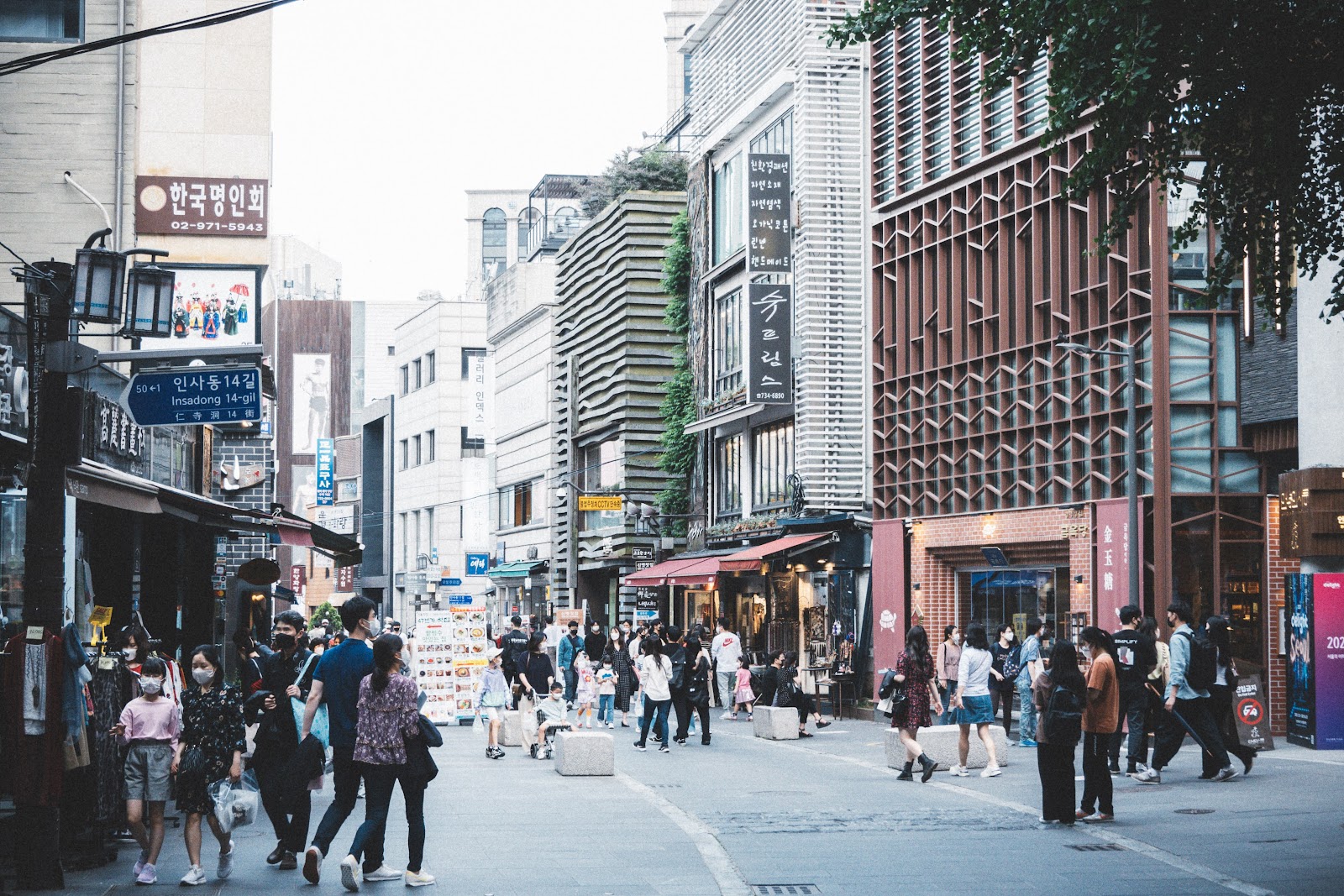Seoul's Royal and Cultural Treasures
Experience Seoul's rich history and vibrant culture in this engaging tour. A perfect one-hour journey through the city's iconic landmarks awaits you!
Time
1 Hours
Stops
5 Places
Distance
?
Gyeongbokgung Palace
Start your tour at Gyeongbokgung Palace, the largest of the Five Grand Palaces built during the Joseon Dynasty, offering a glimpse into Korea's royal history.

Gyeongbokgung Palace (Source: Google Maps)
Gyeongbokgung Palace, the largest of the Five Grand Palaces built during the Joseon Dynasty, stands as a symbol of Korea's royal heritage. Constructed in 1395, it served as the main palace of the Joseon dynasty and is renowned for its stunning architecture, which blends traditional Korean and Chinese styles. The palace features beautiful gardens, grand halls, and the iconic Gyeonghoeru Pavilion, which overlooks a serene pond and is surrounded by picturesque landscapes. Visitors can witness the changing of the guard ceremony, which showcases traditional military attire and customs. The palace also houses the National Palace Museum of Korea and the National Folk Museum of Korea, providing deeper insights into Korea’s history and culture. Gyeongbokgung is a must-visit for anyone interested in understanding Korea's royal past and architectural beauty.
National Folk Museum of Korea
Located within the grounds of Gyeongbokgung Palace, this museum provides insights into the daily lives, culture, and history of the Korean people.

National Folk Museum of Korea (Source: Google Maps)
The National Folk Museum of Korea, located within the grounds of Gyeongbokgung Palace, is dedicated to preserving and showcasing the rich cultural heritage of Korea. Established in 1945, the museum offers an extensive collection of artifacts that depict the daily lives, traditions, and customs of the Korean people throughout history. Visitors can explore various exhibits that highlight the evolution of Korean society, including agriculture, family life, and festivals. The museum's outdoor exhibition area features traditional houses and structures, allowing guests to experience Korea's architectural diversity. Educational programs and workshops further enrich the visitor experience, making it a valuable resource for understanding Korea's past and cultural identity. The museum's emphasis on folk culture provides a unique perspective on the everyday lives of Koreans, making it an integral part of any cultural exploration in Seoul.
Bukchon Hanok Village
A short walk from the palace, Bukchon Hanok Village is a picturesque neighborhood filled with traditional Korean houses, offering a walk through Seoul's historical past.

Bukchon Hanok Village (Source: Google Maps)
Bukchon Hanok Village is a charming neighborhood nestled between Gyeongbokgung Palace and Changdeokgung Palace, famous for its well-preserved traditional Korean houses, known as hanoks. This historic village dates back to the Joseon Dynasty and offers a glimpse into Seoul's architectural past. Walking through its narrow alleyways, visitors can admire the unique wooden structures, tiled roofs, and intricate details that reflect the beauty of traditional Korean design. The village is not just a living museum; it is home to residents who continue to inhabit these historic homes. Bukchon also hosts various cultural workshops, including traditional crafts, tea ceremonies, and Korean cooking classes, providing an immersive experience for visitors. The village's location offers stunning views of the surrounding palaces and modern city skyline, making it a perfect blend of history and contemporary culture. Bukchon Hanok Village is a must-see for those looking to connect with Korea's rich heritage.
Changdeokgung Palace
Continue to Changdeokgung Palace, a UNESCO World Heritage site known for its beautiful garden and well-preserved architecture.

Changdeokgung Palace (Source: Google Maps)
Changdeokgung Palace, a UNESCO World Heritage site, is renowned for its remarkable architecture and beautifully landscaped gardens. Built in 1405, it served as a secondary palace for the Joseon Dynasty and is celebrated for its harmonious integration with the surrounding nature. The palace complex includes the Secret Garden, a stunning area filled with ponds, pavilions, and diverse plant life that showcases the beauty of traditional Korean landscaping. Visitors can explore the well-preserved royal halls, including the Injeongjeon Hall, where important state affairs were conducted. Changdeokgung is unique in its design, emphasizing natural beauty and tranquility, which is reflected in its layout and construction. The palace's historical significance, along with its architectural beauty, makes it a vital part of Korea's cultural heritage. Guided tours often highlight the stories of the royal family and significant events that shaped Korean history, providing a deeper understanding of this magnificent site.
Insadong Street
Conclude your tour at Insadong Street, a vibrant area known for its traditional tea houses, art galleries, and antique shops, perfect for experiencing local culture and crafts.

Insadong Street (Source: Google Maps)
Insadong Street is a vibrant cultural district in Seoul, known for its unique blend of traditional and contemporary Korean arts. This bustling area is filled with traditional tea houses, art galleries, antique shops, and street vendors selling handmade crafts. Insadong has been a hub for artists and artisans for centuries, and it continues to be a focal point for those seeking authentic Korean culture. Visitors can enjoy traditional tea ceremonies, explore galleries showcasing contemporary art, and shop for souvenirs that reflect Korea's rich artistic heritage. The street is also famous for its seasonal festivals and events, which celebrate Korean traditions and arts. Insadong's lively atmosphere and cultural significance make it an ideal place to experience the heart of Seoul's creative spirit. Whether you're looking to relax in a tea house or immerse yourself in local art, Insadong Street offers a delightful experience that captures the essence of Korean culture.

Your travels, your rules.
Create your own Free Walking Tours.
Set your preferences, distances and anything you want to do or see.
Completely free, no payment required.